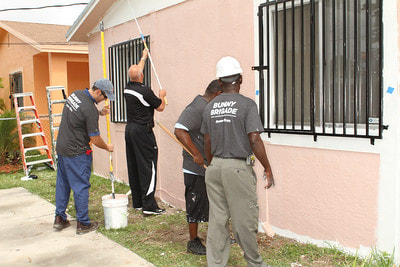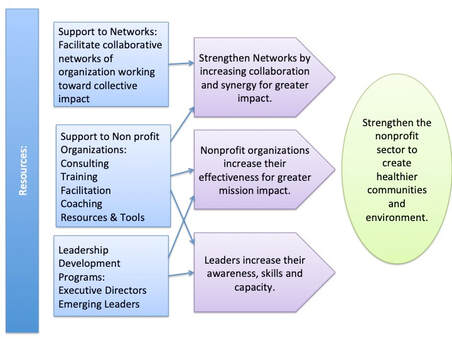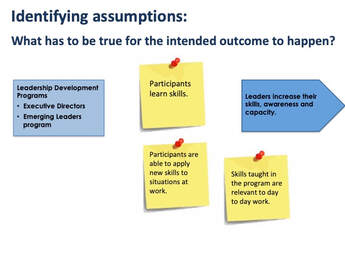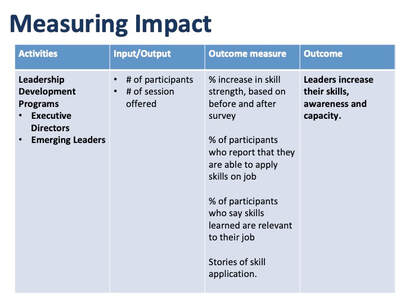Mission: Impact podcast & blog
Build a better world without becoming a martyr to your nonprofit cause
Listen on:
|
Is strategic planning worth the effort? Frequently organizations are concerned whether it will be time well spent, whether the plan that gets created will get implemented. Here are two stories of the impact strategic planning had on two small organizations that prioritized getting intentional about their future. Keeping Growth & Momentum Going Photo by RUN 4 FFWPU from Pexels Photo by RUN 4 FFWPU from Pexels Challenge: A local disability focused service nonprofit spent the last several years strengthening its board, its financial footing and documenting processes for its signature events. After this strengthening process, the leadership decided it was in a good position to be more deliberate about deciding its future direction. Approach After interviewing key stakeholders and conducting focus groups of board members, I shifted what was planned as a full day retreat to two online sessions. The goal of the sessions was to define the organization's key goals for the next 3-5 years. During the online sessions, the board
Results The organization now has a new strategic plan with clear support from the organization's leadership. The process helped the group celebrate the strides they had taken over the past several years. They were able to acknowledge their success and build on that positive momentum to move forward with focus and direction. A lesson in letting go  Cristofer Jeschke on Unsplash Cristofer Jeschke on Unsplash Challenge: A local environmental nonprofit had been volunteer-led for most of its 30 years. In the past five years, it had hired its first executive director and added several part-time staff. The organization had not successfully undergone strategic planning and its vision was primarily directed by its founding board members. The organization had a very large board that was still very involved in day-to-day operations. Approach I interviewed and conducted focus groups with key board members. Board members conducted interviews with external stakeholders. I facilitated two online sessions to define the organization's key goals for the next 3-5 years. During the online sessions, the board
Through these sessions the board and staff were able to recognize ways in which how they were operating was getting in their own way and make plans to adjust. They had tough conversations about what the role of the board and the staff needed to be going forward and how to make working together a more positive experience. Results The nonprofit organization now has a new strategic plan with clear delineation of roles and responsibilities as well as action items and key performance indicators. This is the organization's first strategic plan that was developed as a shared vision. Nonprofit organization often value participatory decision making. Yet often nonprofit leaders think the only way to achieve participation is to strive for consensus. Groups often fear working on a consensus basis because they are afraid of the time it will take to make a decision. They are afraid of being caught in a spiral of discussion, more discussion and yet more discussion and no resolution. They may be afraid of this because they may assume that everyone has to be 100% behind a decision for the group to move ahead. When a group is considering an issue, ideally there is a discussion that considers a wide range of options. Then the discussion comes to a clear end point with a decision. Once a decision is made the group moves to action. This image illustrates this ideal. Americans tend to be quite action oriented and in our culture we can get impatient easily, wanting to jump to a decision. And thus more frequently it feels like this: Part of the group thinks a decision has been made and others thinks the item is still up for discussion. And still others may not be clear what decision is on the table. Consensus continuumOnce the nonprofit group is clear about what they are deciding, a useful tool for testing the level of agreement is the consensus continuum. Applying the continuumI was part of a nonprofit board that used this continuum when it was deliberating about a very challenging situation. There was no good solution to the high stakes problem we were facing. There were only several bad choices to choose from. Which bad choice was better than the other? We deliberated for a long time. Deliberation happened over multiple meetings, over multiple weeks. Ultimately we were able to make a decision that everyone in the group could live with even if it was not their preferred option by using this tool. How many people you need to have in the 1-3 zone will depend on how high stakes a decision it is. Using this as a check in can move along even decisions that may seem like they are low stakes but are taking a long time. You may find it is higher stakes for some in the group. There was no good solution to the high stakes problem the nonprofit board was facing. There were only several bad choices to choose from. Which bad choice was better than the other? We deliberated for a long time. Deliberation happened over multiple meetings, over multiple weeks. Ultimately we were able to make a decision that everyone in the group could live with even if it was not their preferred option by using this tool. Making time for processNonprofit groups often want to jump to action and resist taking time on ‘process’ issues. Being clear about how the group makes decisions is a core process issue that rarely gets discussed. Taking the time can actually save the group both time and angst in the long run.
Have a group that needs help with how they are working together? Reach out for a coaching session.  Photo by El Gringo, Miami Habitat for Humanity Photo by El Gringo, Miami Habitat for Humanity Your nonprofit organization is designed for a specific mission with the goal of having an impact in the world. The world will be different in some way because of the work you do. Homeless people are cared for and fed who wouldn’t be otherwise. First generation college students increase their understanding of financial aid so that they can make better decisions about paying for their education. They’d make costly mistakes without you. Emerging leaders in marginalized communities are supported to strengthen their self-awareness and skills so that they can advocate for their community. You undertake the activities and programs with the aim of furthering your mission. Have you taken the time to look at how all the pieces fit together and whether it all adds up? Creating a picture A sample impact map of a capacity building organization. A sample impact map of a capacity building organization. When you create an impact map also known as a logic model, you create a visual representation of what your organization is doing and how it creates the impact you want to have in the world. It makes clear how you leverage resources and organizational capacities to deliver your core strategies to achieve tangible results. By creating an impact map, you are able to create a model that illustrates your beliefs about the change you are trying to make. Identifying assumptions Sample outcomes and indicators. Sample outcomes and indicators. It also can help you uncover the assumptions inherent in your programs and activities. You can also describe what short, medium and long term outcomes you believe result from each program or activity. A good question for identifying assumptions is to ask, “what has to be true for this outcome to happen?” These essentially are the hypotheses embedded in your program design. Are there gaps in logic? Are you measuring inputs and outputs or outcomes? Are you measuring inputs and outputs or outcomes? Once you have created your map and identified the assumptions inherent with each program, you can consider how you might measure whether you are having the mission impact you are aiming for. An impact map can also uncover gaps in your logic. Creating shared understandingEngaging in the process of impact mapping can be a useful exercise for staff and/or your board. Have small groups create an impact map of your organization. Then compare the maps. Do people envision the same organization? Where are the gaps in knowledge and understanding?
Once you have agreement on your organization’s impact map, take it one step further. Have a conversation about the implications of the map. Ask questions such as:
Think this might be helpful for your organization and would like some help? Inquire about a coaching session. What does all this growth mean for our nonprofit going forward? Photo by Felix Mittermeier from Pexels Photo by Felix Mittermeier from Pexels Challenge: An education related organization had accomplished all the key goals in their current strategic plan. Over this period, the organization experienced substantial growth both in the number of clients it was serving as well as the scope of the services they were providing the field. With the increased staff strength, the board had become accustomed to relying on staff for direction and strategic thinking. The organization needed to assess the implications of this growth, ensure that there was alignment of staff and board in order to set direction and clear goals for the next 3-5 years. Approach: After interviews with each of the board members, and external stakeholder interviews as well as focus groups with staff, I facilitated a one-day retreat with the board and staff leadership. The retreat focused on: • conducting an environmental scan to identify key trends impacting the organization’s work, • reviewing the themes from the interviews and focus groups and discuss their implications • envisioning the organization’s future impact on the field, • resulting in identifying two to three key strategic goals for the organization. Results: The organization now has a new strategic plan with clear support from both the board and staff leadership. The process helped the board step into its strategic role. Board meetings now have time dedicated to focusing on strategic questions. Staff leadership was also able to recognize how some of their actions encouraged the board to rely on them. Thus they are now equipped to make different choices moving forward. They can be clearer about what is staff work and what is the board’s responsibility. Are our board and staff focused on the right things? Photo by Mark Arron Smith from Pexels Photo by Mark Arron Smith from Pexels Challenge: A local land trust organization had a regular good practice of conducting a board self-assessment each year. Over the past couple years, a few indicators created some concern. The group decided it would benefit from outside facilitation for its annual board staff retreat to dive into the issues raised in the self-assessment, including roles and responsibilities between board and staff. Approach: In addition to the board self-assessment results, I conducted a survey of staff and board. My goal was to learn about the board’s current concerns and to understand the staff’s perspective on the organization’s current state. During the retreat, after a brief presentation on nonprofit life cycles, the group considered where their organization stood in its development. I then shared the themes from the survey and had the group discuss the implications. Board and staff learned that they had more in common than they thought on their perspectives of what the organization needed to improve in terms of operations. It also became clear that the board was eager to stay at the governance level and focus on longer-term strategic issues. Through small group work, the groups considered its current initiatives and areas for future development and sketched out next steps. The group then gave each small group feedback. Results: Through the retreat, the board and staff were able to open up conversations focused on roles and responsibilities that they had had some trepidation about addressing. The conversations revealed more agreement than individuals had expected. The group identified areas for growth and left with increased clarity on roles, goals and next steps.  Photo by rawpixel.com from Pexels Photo by rawpixel.com from Pexels Challenge: Nine new nonprofit executive directors came together to create a learning community for conservation movement leaders. The group aimed to learn about topics related to nonprofit management, governance, institutional advancement, and healthy partnerships. While the group could pursue organizing the learning program by themselves, they decided they would be better supported by a facilitator who would create the content and lead them, working collaboratively with the group to create a program that met the group’s needs. Approach: After interviewing each of the participants about their hopes for the program as well as the challenges they were facing with their organization, I worked with a planning committee to plan the monthly learning sessions. Each participant completed a self-assessment of their executive director competencies and drafted a professional learning plan to define their learning goals for the program.
During each monthly session we used half the session to dive into a topic and the second half for the group to participate in peer coaching circles. Peer coaching circles can take a number of different forms. To keep it simple, I set two basic ground rules for the time. Each person would present their challenge briefly and then the rest of the group would ask questions for a set amount of time. This process helped each person think aloud about their challenge and the questions from the group helped them consider aspects that they might have missed. This also provided the ‘questioners’ practice with being in a coaching stance, rather than jumping in with a solution. This was a useful skill for them to develop as they supervise staff. In between meetings, pairs met as accountability partners. Monthly topics included organizational culture, staff management, board development, strategic planning, mapping organizational impact, and creating a organizational dashboard. We culminated the program with a retreat that combined time with accountability partners, focus on a couple content areas as well as topics identified through an open space process. Results: Participants reported that they: Felt less alone. “It’s lonely at the top.” This sentiment was expressed early on as the peer-learning network was forming. Being able to compare notes, share wins and challenges and get feedback from peers was invaluable. It helped those in the network feel less lonely as they developed a group of trusted colleagues to whom they could reach out in times of doubt and challenge. Thought bigger. Several participants came into the program feeling confident about their abilities in running programs. They were unsure, however, about shifting to a more strategic level of organizational leadership. Through feedback from participants and others, they were able to shift their perspective and see how they could take their program management skills and use them as the foundation for their strategic work as executive directors. Built accountability. For new executive directors, this may be the first time they’ve worked without a direct supervisor. To help each participant achieve their goals, they paired up with an accountability partner and regularly met to discuss their progress. This practice is grounded in research that shows that if you write down your goals you are more likely to achieve them. If you share them with another person and then check in with that person on how you are doing on your goals, you are even more likely to follow through. These pairings not only helped participants advance their work, it strengthened their connections within the network. Want similar results? Inquire about a coaching call. |
Archives
April 2024

Grace Social Sector Consulting, LLC, owns the copyright in and to all content in and transcripts of the Mission: Impact podcast, as well as the Mission: Impact blog with all rights reserved, including right of publicity.
|
Telephone301-857-9335
|
info[at]gracesocialsector.com
|
Grace Social Sector Consulting, LLC, owns the copyright in and to all content in, including transcripts and audio of the Mission: Impact podcast and all content on this website, with all rights reserved, including right of publicity.
|